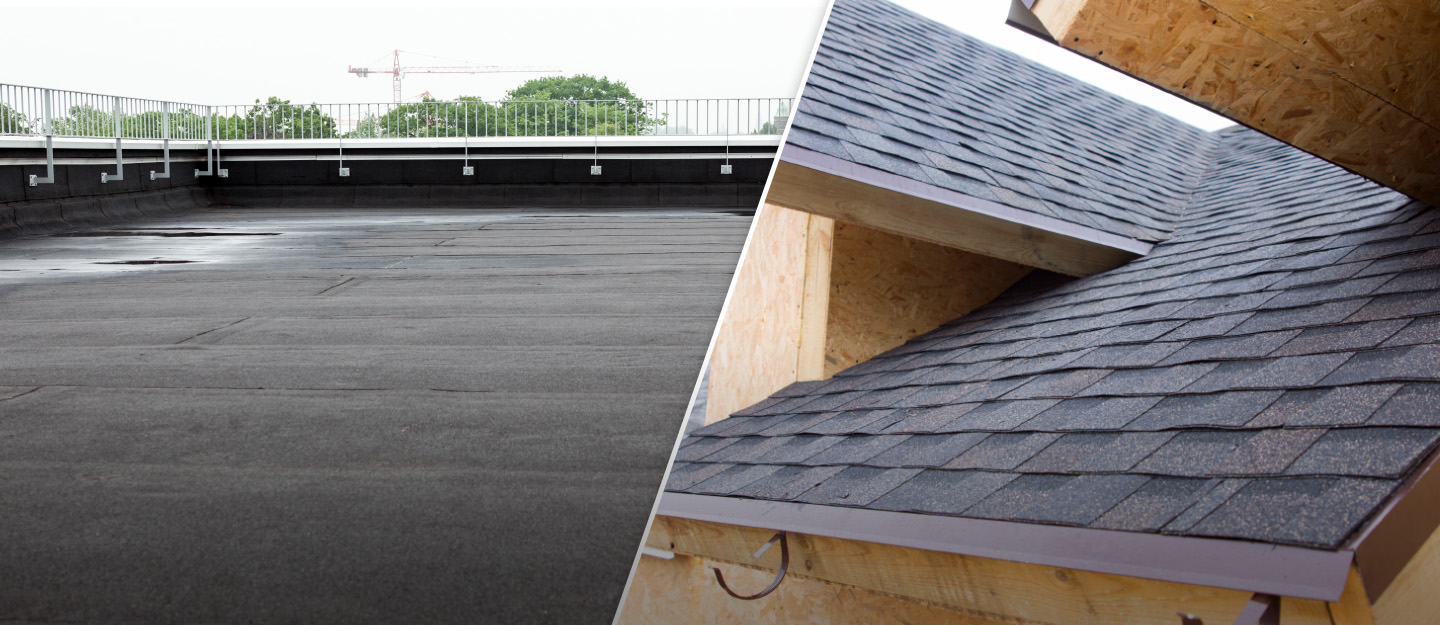HOME
Flat Roofs Vs. Sloped Roofs: Which is Better for Helena Homes?

When deciding on the best roofing option for your home in Helena, understanding the differences between flat and sloped roofs is crucial. Both styles have their unique benefits and drawbacks, and the ideal choice depends on various factors such as climate, architectural style, and budget. A reputable Helena roofing contractor. Like Ellingson Roofing LLC, can offer professional advice tailored to your specific needs. This article explores the key differences, advantages, and disadvantages of flat and sloped roofs, and provides insights into their suitability for Helena’s unique climate and architectural landscape.
Key Differences Between Flat and Sloped Roofs
1. Design and Structure
- Flat Roofs: Flat roofs, despite their name, have a slight pitch, typically around 1-2 degrees, to facilitate water drainage. This minimal slope gives flat roofs a modern, sleek appearance, making them a popular choice for contemporary homes and commercial buildings. The design allows for creative use of roof space, such as installing rooftop gardens or patios, which can enhance urban living environments.
- Sloped Roofs: Sloped roofs, characterized by their steeper angle, are the traditional choice for residential homes. The slope, which varies from modest to steep, provides effective water runoff, reducing the risk of leaks and water damage. Sloped roofs come in various styles, including gable, hip, and mansard, each offering a distinct aesthetic that can complement a wide range of architectural designs.
2. Installation Process
- Flat Roofs: Installing a flat roof is generally simpler and faster due to its straightforward structure. The process involves laying down a waterproof membrane, followed by insulation and a final surface layer. Despite the ease of installation, flat roofs require precise waterproofing to prevent leaks, which can be a challenge in regions with heavy rainfall.
- Sloped Roofs: The installation of sloped roofs is more complex due to the need for additional structural components like trusses and rafters to support the angled design. This complexity can make the installation process time-consuming and labor-intensive. However, the pitched design enhances durability and provides natural water and snow runoff, crucial for maintaining the roof’s integrity in various weather conditions.
3. Space Utilization
- Flat Roofs: The possibility of more useable area is a major benefit of flat roofs. Homeowners can transform flat roofs into functional outdoor living areas, such as rooftop gardens, terraces, or solar panel installations. This utilization of roof space is particularly beneficial in urban settings where outdoor space is limited.
- Sloped Roofs: While sloped roofs typically do not offer usable space on top, they provide excellent attic or loft spaces beneath the roof. These spaces can be utilized for storage or converted into additional living areas, adding value and functionality to the home. The increased insulation provided by the attic space can also contribute to better energy efficiency.
Advantages and Disadvantages of Each Type
1. Flat Roofs
- Advantages: Flat roofs offer cost-effective installation, easy maintenance access, and potential for outdoor living spaces, enhancing functionality and aesthetics.
- Disadvantages: However, they require high maintenance, have a shorter lifespan, and are less effective in heavy precipitation areas without advanced drainage solutions.
2. Sloped Roofs
- Advantages: Sloped roofs excel in water and snow runoff, boast a longer lifespan with durable materials, and enhance insulation and energy efficiency.
- Disadvantages: On the downside, they entail higher initial installation costs, and challenging repairs, and may not align with modern aesthetics.
Cost Comparison and Longevity
1. Initial Costs
- Flat Roofs: Lower upfront expenses due to simpler design and fewer materials. Ideal for budget-conscious homeowners. Long-term maintenance costs should be factored in.
- Sloped Roofs: Higher initial investment due to complex design and additional materials.
2. Longevity and Durability
- Flat Roofs: Lifespan of 10-20 years with regular maintenance. Susceptible to water damage, requiring vigilant care.
- Sloped Roofs: Last 30-50+ years, especially with durable materials. Effective water drainage reduces leaks, providing enduring protection.
Maintenance Requirements for Each Type
1. Flat Roofs
- Regular Inspections: Flat roofs require frequent checks for water pooling, membrane damage, and debris buildup. Inspections should be conducted at least twice a year and after significant weather events to identify and address potential issues promptly.
- Repairs: Quick attention to cracks, punctures, and leaks is crucial to prevent major damage. Regular maintenance includes patching small holes and resealing joints to maintain the roof’s waterproof integrity.
- Cleaning: Routine removal of leaves, branches, and other debris is essential to ensure proper drainage and prevent blockages. Keeping the surface clean helps maintain the roof’s condition and extends its lifespan.
2. Sloped Roofs
- Seasonal Inspections: Regular inspections, particularly in spring and fall, are necessary to check for shingle damage, flashing issues, and gutter blockages. Identifying and addressing these issues early can prevent more extensive damage.
- Repairs: Timely repair of missing or damaged shingles is vital to maintain the roof’s protective barrier. Addressing issues such as cracked tiles or loose flashing promptly can prevent leaks and structural damage.
- Gutter Maintenance: Ensuring gutters and downspouts are clear of debris is crucial for proper water runoff. Regular cleaning and maintenance of the gutter system help prevent water buildup and protect the roof’s integrity.
Conclusion
Choosing between a flat or sloped roof for your Helena home depends on various factors, including climate suitability, architectural style, and budget. While flat roofs offer modern aesthetics and additional usable space, they require diligent maintenance to prevent water-related issues. On the other hand, sloped roofs provide superior durability and weather resistance, making them a popular choice in regions with significant precipitation like Helena. Consulting with experienced Helena roofers, like those at Ellingson Roofing LLC, can help you make an informed decision that balances functionality and style. With the right choice, your roof will protect and enhance your home for years to come.
Stay ahead of the curve with the freshest news updates by exploring TodayFirstMagazine!







